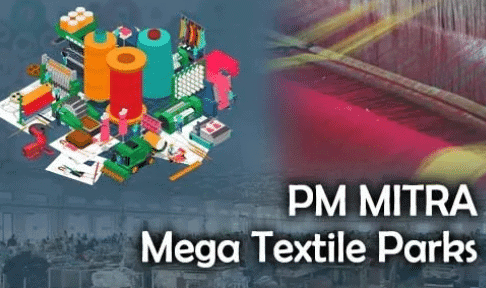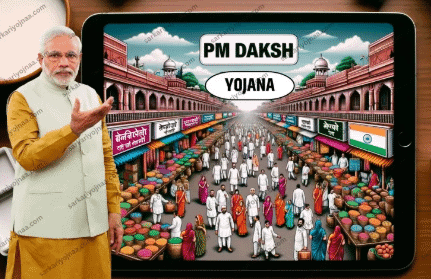PIB Summary- 12th March, 2025 | PIB (Press Information Bureau) Summary - UPSC PDF Download
SCHEME FOR TEXTILE INDUSTRY
Context
The Government of India has launched several schemes to promote the textile sector across the country.
These initiatives aim to attract investment, modernize infrastructure, and generate employment.
PM MITRA Parks Scheme

- The scheme focuses on developing modern, large-scale, integrated industrial parks for the textile sector.
- Seven PM MITRA parks will be established in Tamil Nadu, Telangana, Gujarat, Karnataka, Madhya Pradesh, Uttar Pradesh, and Maharashtra.
- These parks will provide world-class infrastructure, including plug-and-play facilities, with a financial outlay of ₹4,445 crore until 2027-28.
- The objective is to make India a global hub for textile manufacturing and exports.
Production Linked Incentive (PLI) Scheme
- Encourages large-scale manufacturing in Man-Made Fibre (MMF) apparel and technical textiles.
- Aims to enhance India’s competitiveness in the global textile market.
National Technical Textiles Mission
- Focuses on research, innovation, market development, skill enhancement, and export promotion in technical textiles.
SAMARTH – Skilling Initiative
- Provides skill development programs for the textile sector.
- Aims to improve employment opportunities through demand-driven training.
Technology Upgradation and Sericulture Development
- ATUFS offers financial incentives for modernizing textile machinery.
- Silk Samagra-2 supports the sericulture value chain for better silk production.
Handloom and Handicraft Promotion
- National Handloom Development Programme and Raw Material Supply Scheme assist weavers with raw materials, upgraded looms, and concessional loans.
- National Handicrafts Development Programme and Comprehensive Handicrafts Cluster Development Scheme provide financial aid for artisan development, skill training, and marketing support.
Conclusion
These initiatives aim to boost investment, improve infrastructure, and create employment opportunities in India’s textile sector.
PM-DAKSH YOJANA

Context
The government is implementing PM-DAKSH to provide skill training for marginalized communities, ensuring employment opportunities through certified training programs.
PM-DAKSH Scheme
- PM-DAKSH Scheme is a Central Sector Scheme aimed at providing skill training to marginalized communities, including SCs, OBCs, EWSs, DNTs, and Safai Karamcharis, including waste pickers.
- It is implemented by the Ministry of Social Justice and Empowerment.
- It is implemented without state-wise fund allocation, as states have no role in its execution.
- Training is provided by empanelled institutes offering job-specific courses based on regional demand through the SIDH Portal of the Ministry of Skill Development and Entrepreneurship.
- The scheme focuses on wage and self-employment, ensuring certified trainees receive placement opportunities.
- Awareness campaigns are conducted through print and social media, as well as community outreach programs.
- Since its inception, over 1.87 lakh beneficiaries have been trained across various states and union territories.
Doubling Farmers Income
Context
The government has introduced various schemes and policy measures to enhance farmers’ income, improve agricultural productivity, and promote sustainable farming practices across India.
Government Support for Agriculture in India
- Agriculture is a State Subject, but the Government of India supports states through policy measures, budgetary allocation, and various schemes to help farmers.
- The budget allocation for the Department of Agriculture & Farmers Welfare (DA&FW) has increased from ₹21,933.50 crore in 2013-14 to ₹1,22,528.77 crore in 2024-25.
Major Schemes to Increase Farmers’ Income
The Government of India has launched several schemes to increase farmers’ income and provide financial security:
- Pradhan Mantri Kisan Samman Nidhi (PM-KISAN) – Provides ₹6,000 per year in three installments to landholding farmers for agricultural and domestic needs.
- Pradhan Mantri Kisan Maan Dhan Yojana (PM-KMY) – Offers pension benefits to small and marginal farmers.
- Pradhan Mantri Fasal Bima Yojana (PMFBY) – Provides crop insurance against losses due to natural calamities.
- Modified Interest Subvention Scheme (MISS) – Helps farmers get affordable credit for farming activities.
- Agriculture Infrastructure Fund (AIF) – Supports infrastructure development in the agriculture sector.
- Formation of 10,000 Farmer Producer Organizations (FPOs) – Helps small farmers work together for better market access.
- National Mission on Natural Farming (NMNF) – Promotes chemical-free farming to improve soil health and reduce costs.
- Other Schemes – Cover areas like agriculture mechanization, organic farming, irrigation, horticulture, oilseeds production, and digital agriculture.
PM-KISAN Scheme Achievements
- PM-KISAN is a Central Sector Scheme, implemented since December 1, 2018.
- As of March 5, 2025, over ₹3.68 lakh crore has been transferred to farmers’ accounts.
Promotion of Natural Farming
- The Union Cabinet approved the National Mission on Natural Farming (NMNF) on November 25, 2024.
- It is a Centrally Sponsored Scheme with a budget of ₹2,481 crore (Government share: ₹1,584 crore, State share: ₹897 crore).
- Natural Farming is a chemical-free method using local livestock and diverse crop systems to improve soil health and climate resilience while reducing input costs.
FAQs on PIB Summary- 12th March, 2025 - PIB (Press Information Bureau) Summary - UPSC
| 1. What is the PM-DAKSH Yojana and how does it benefit the textile industry? |  |
| 2. How does the PM-DAKSH Yojana contribute to doubling farmers' income? |  |
| 3. Which specific training programs are offered under the PM-DAKSH Yojana for the textile industry? |  |
| 4. Who are the target beneficiaries of the PM-DAKSH Yojana in relation to the textile industry? |  |
| 5. What role does the PM-DAKSH Yojana play in the overall development of the Indian textile sector? |  |





















